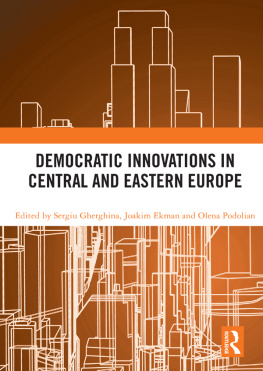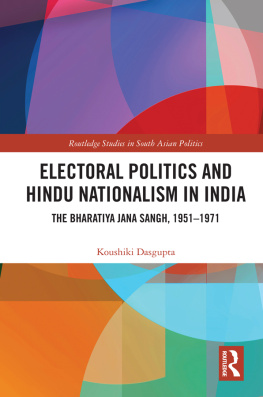Wired and Mobilizing
Routledge Studies in Science, Technology and Society
1. Science and the Media
Alternative Routes in Scientific Communication
Massimiano Bucchi
2. Animals, Disease and Human Society
Human-Animal Relations and the Rise of Veterinary Medicine
Joanna Swabe
3. Transnational Environmental Policy
The Ozone Layer
Reiner Grundmann
4. Biology and Political Science
Robert H. Blank and
Samuel M. Hines, Jr.
5. Technoculture and Critical Theory
In the Service of the Machine?
Simon Cooper
6. Biomedicine as Culture
Instrumental Practices, Technoscientific Knowledge, and New Modes of Life
Edited by Regula Valrie Burri and Joseph Dumit
7. Journalism, Science and Society
Science Communications Between News and Public Relations
Edited by Martin W. Bauer and Massimiano Bucchi
8. Science Images and Popular Images of Science
Edited by Bernd Hppauf and Peter Weingart
9. Wind Power and Power Politics
International Perspectives
Edited by Peter A. Strachan, David Lal and David Toke
10. Global Public Health Vigilance
Creating a World on Alert
Lorna Weir and Eric Mykhalovskiy
11. Rethinking Disability
Bodies, Senses, and Things
Michael Schillmeier
12. Biometrics
Bodies, Technologies, Biopolitics
Joseph Pugliese
13. Wired and Mobilizing
Social Movements, New Technology, and Electoral Politics
Victoria Carty
Wired and Mobilizing
Social Movements, New Technology, and Electoral Politics
Victoria Carty

New York London
First published 2011
by Routledge
270 Madison Avenue, New York, NY 10016
Simultaneously published in the UK
by Routledge
2 Park Square, Milton Park, Abingdon, Oxon OX14 4RN
Routledge is an imprint of the Taylor & Francis Group, an informa business
This edition published in the Taylor & Francis e-Library, 2010.
To purchase your own copy of this or any of Taylor & Francis or Routledges collection of thousands of eBooks please go to www.eBookstore.tandf.co.uk.
2011 Taylor & Francis
The right of Victoria Carty to be identified as author of this work has been asserted by
her in accordance with sections 77 and 78 of the Copyright, Designs and Patents Act
1988.
All rights reserved. No part of this book may be reprinted or reproduced or utilised
in any form or by any electronic, mechanical, or other means, now known or hereafter invented, including photocopying and recording, or in any information storage or
retrieval system, without permission in writing from the publishers.
Trademark Notice: Product or corporate names may be trademarks or registered trademarks, and are used only for identification and explanation without intent to infringe.
Library of Congress Cataloging-in-Publication Data
Carty, Victoria.
Wired and mobilizing : social movements, new technology, and electoral politics / by
Victoria Carty.
p. cm. (Routledge studies in science, technology and society ; 13)
Includes bibliographical references and index.
1. Social movementsTechnological innovations. 2. Internet in political
campaigns. 3. InternetSocial aspects. 4. Online social networksPolitical
aspects. 5. Social mediaPolitical aspects. I. Title.
HM881.C367 2011
322.4'40973dc22
2010011745
ISBN 0-203-84276-6 Master e-book ISBN
ISBN13: 978-0-415-88070-1 (hbk)
ISBN13: 978-0-203-84276-8 (ebk)
Contents
Acknowledgment
Thank you, Miguel, for your inspiration and helping me to understand the true treasures and blessings of life. Thanks to the countless peers, friends, and colleagues who have always supported me. And most importantly, thank you mom and dad, for everything.
Introduction
There has been a proliferation of research on social movements during the past several decades, and the emergence of new information communication technologies (ICTs) and the digital media boom have strongly affected this scholarship. Electronic social movement organizations (SMOs) and online activists are redefining political struggle across the dimensions of contentious and electoral politics in terms of recruitment, mobilizing and strategizing, fundraising, and campaigning. Not only have SMOs gone online to disseminate information and publicize protest information, but the explosion of e-movements, e-protest, and e-activism highlights the importance of the Internet as an organizational tool (Earl and Schussman 2003). Wired activism has become a significant, if not essential, repertoire for social movement actors within the new communication landscape which allows activists to engage in new forms of disruptive activity (such as hacktivism and e-mail spamming), and/or adapt existing modes of contention to an online environment (virtual sit-ins, online petitions, etc.).
As Castells (2007) notes, historically, communication and information have been fundamental sources of power and counter-power of domination and social change. He summarizes: Indeed, the ongoing transformation of communication technology in the digital age extends the reach of communication media to all domains of social life in a network that is at the same time global and local, generic and customized in an ever-changing pattern. As a result, power relations as well as the processes challenging institutionalized power relations are increasingly shaped and decided in the communication field (p. 239). Additionally, new digital technologies and the World Wide Web allow for more varieties of group formation and support among individuals, even the most transient sectors who care about similar issues, as like-minded people are easier to find in cyberspace (Brecher, Costello and Smith 2009).
Since the mid 1990s we have witnessed a number of struggles in which marginalized groups have used the Internet to create or sustain mobilizations. For example, it was through the Internet that a worldwide movement developed to challenge the neoliberal agenda proposed by the OECD (Organization of Economic Co-Operation and Development) in 1995. The treaty put forth was the Multilateral Agreement of Investment which sought to liberalize cross-border investment and trade restrictions, and would have greatly expanded the role of investors at the expense of national governments, workers, and the environment. However, it was leaked over the Internet by non-governmental organizations and disseminated over various listserves which led to international protest and criticism (Kobrin 1998). This was one of the first instances of activists using electronic communication to engage in direct civic communication outside of traditional broadcast media and national elites.












